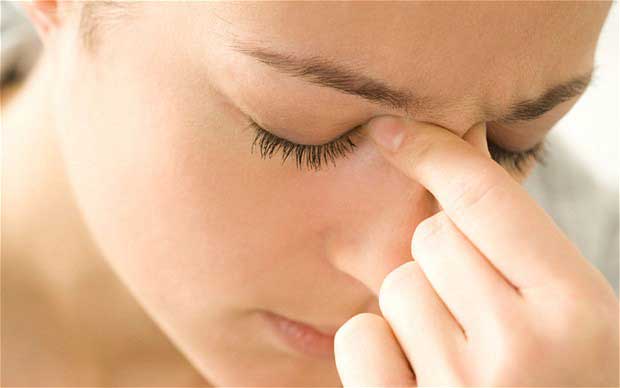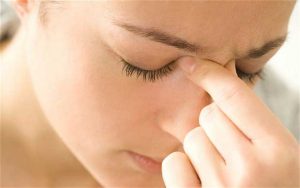

طب سوزني و سینوزیت
طب سوزني و سینوزیت – سالانه حدود دو درصد جمعیت بریتانیا بخاطر یک عفونت احتمالی سینوس به پزشک مراجعه می کنند. اکثر افرادی که به سینوزیت حاد دچار می شوند چه توسط پزشک تحت درمان قرار بگیرند و چه درمانی برای آنها انجام نگردد بعد از حدود ده روز بهبود می یابند. با اینحال برای 92 درصد آنها توسط پزشک، داروی آنتی بیوتیک تجویز می شود، هرچند تفاوت زیادی در تجویز یا عدم تجویز آن نباشد. سینوزیت حاد عبارت است از التهاب بینی و سینوس ها به مدت 12 هفته یا کمتر که دارای حداقل دو ویژگی زیر می باشد: انسداد، احتقان، ترشح (از جلو یا پشت حلق)، درد یا فشار صورت، کاهش یا از دست دادن کامل حس بویایی. سایر علائم سینوزیت می توانند شامل دندان درد (دندان های فوقانی)، حساسیت، تورم، بی حالی و تب باشند. اگر علائم سینوزیت بیش از 12 هفته باقی بمانند به آن سینوزیت مزمن گفته می شود. سینوزیت حاد می تواند به علت عفونت های ویروسی یا باکتریایی ایجاد شود. عوامل مستعد کننده سینوزیت
عبارتند از: عفونتهای دستگاه فوقانی تنفسی، رینیت آلرژیک، استعمال دخانیات، دیابت، عفونتهای دندان، اختلالات ساختمانی بینی مثل انحراف یک طرفه تیغه وسط بینی. عوارض بالقوه سینوزیت شامل گسترش عفونت به اطراف چشم (که می تواند باعث کوری شود)، عفونت استخوان پیشانی سر، و ابتلاء به مننژیت می باشد. علایم و نشانه های چنین عوارض بالقوه خطرناکی عبارتند از: تورم چشم یا پلک، قرمز شدن چشمها، دوبینی، کاهش بینایی، سردردهای شدید پیشانی و نشانه های مننژیت. سینوزیت مزمن معمولا شیوع خیلی کمتری از سینوزیت حاد داشته و عمدتا از سینوزیت حاد ایجاد می شود و می تواند به علت تخلیه ضعیف ترشحات سینوس مبتلا و تغییرات التهابی مخاط سینوس ( که بر اثر عفونت ایجاد می شود) باشد. گاهی اوقات سایر عوامل نیز ممکن است باعث ایجاد و یا تشدید گسترش سینوزیت مزمن گردد. برای مثال، وجود یک آلرژی مداوم می تواند باعث التهاب در یک سینوس، تورم و یا انسداد تخلیه ترشحات شود. در درمان سینوزیت از داروهایی مثل استامینوفن و بروفن برای تسکین درد استفاده می شود. استفاده ازبخور و محلول های نمکی برای شستشوی بینی گاهی اوقات انجام می شود. درمان ضد باکتریایی با استفاده از آنتی بیوتیکها فقط در بیمارانی باید انجام شود که حال عمومی خوبی ندارند و یا اینکه علایم و نشانه های عوارض خطرناک سینوزیت را از خود نشان می دهند. شواهدی که از تحقیقات پزشکان در مورد اثر طب سوزنی در سینوزیت به دست آمده است نشان می دهد که طب سوزنی می تواند به تسکین علایم سینوزیت مثل احتقان بینی کمک نماید. طب سوزنی اثرات مثبت حود را بر روی سینوزیت از طریق مکانیسم های زیر انجام می دهد:
* با افزایش سطح اندورفین ها و نوروپپتید وای به مبارزه با اثرات منفی سینوزیت کمک می کند.
* تحریک اعصاب موجود در عضلات و سایر بافتها که می تواند به ترشح اندورفین ها و سایر فاکتورهای عصبی شیمیایی منجر شود.
* کاهش التهاب بر اثر تقویت ترشح فاکتورهای عروقی و تنظیم کنندهء ایمنی.
* تقویت فعالیت های سلولهای کشنده طبیعی و تنظیم تعداد و نسبت انواع سلولهای ایمنی.
* افزایش گردش خون موضعی که باعث کاهش التهاب می شود.
Each year, around 2% of the UK population consults their GP about a suspected sinus infection (Ashworth 2005). Most people with acute sinusitis recover with or without treatment within 10 days of seeing a GP (Williamson 2007), but about 92% are prescribed an antibacterial, even though it makes little difference to outcome.
(Ashworth 2005) Acute sinusitis is defined as inflammation of the nose and sinuses characterised by the existence, for 12 weeks or less, of two or more of the following symptoms: blockage/congestion; discharge (anterior or posterior nasal drip); facial pain or pressure; and reduced or loss of smell. (Fokkens 2005) Other symptoms can include toothache (involving the upper teeth), tenderness, swelling, malaise and fever. (Ah-See 2007) Sinusitis is considered to be chronic if it lasts for more than 12 weeks, and is associated with similar symptoms.
Acute sinusitis can be due to viral or bacterial infections (Fokkens 2005). Predisposing factors include upper respiratory infections, allergic rhinitis, smoking, diabetes mellitus, dental infections, and mechanical abnormalities such as deviation of the nasal septum. (Ah-See 2007) Potential complications include spreading of the infection around the eye, which possibly leads to blindness, infection of the frontal bone, and meningitis. (Ah-See 2007) Symptoms and signs of such potentially serious complications include swelling of the eyes or lids, eye redness, displacement of the eye, double vision, reduced vision, severe frontal headache, and signs of meningitis. (Scadding 2008) Chronic sinusitis is uncommon, usually develops from acute sinusitis and can be due to poor drainage of the affected sinus, inflammatory changes to the lining of the sinus that result from infection, and a flare-up of infection from time to time as a result of these changes. Sometimes other factors may cause, or contribute, to the development of chronic sinusitis. For example, a persisting allergy that causes inflammation in a sinus, and swelling or blockage of the drainage channel.
Management of sinusitis includes paracetamol or ibuprofen for pain relief, with the addition of codeine if necessary. Steam inhalation and saline nasal solution are also sometimes used. Antibacterial therapy is appropriate only for patients who are systemically very unwell, and have symptoms and signs of, or are at high risk of, serious complications.
How acupuncture can help
Evidence from randomised controlled trials suggests that acupuncture may help relieve symptoms of sinusitis such as nasal congestion (Sertel 2009), though it may not be as effective as conventional medication (Rossberg 2005; Stavem 2008). However, research is very limited and more high-quality randomised controlled trials are needed to assess the effectiveness of acupuncture for sinusitis (see Table below)
Acupuncture may help to relieve pain and congestion in people with sinusitis by
increasing endorphins (Ham 2004) and neuropeptide Y levels (Lee 2009), which can help to combat negative affective states
stimulating nerves located in muscles and other tissues, which leads to release of endorphins and other neurohumoral factors, and changes the processing of pain in the brain and spinal cord (Pomeranz, 1987; Zhao 2008; Cheng 2009);
reducing inflammation, by promoting release of vascular and immunomodulatory factors (Zijlstra 2003; Kavoussi 2007);
enhancing natural killer cell activities and modulating the number and ratio of immune cell types (Kawakita 2008);
increasing local microcirculation (Komori 2009), which aids dispersal of swelling.
In general, acupuncture is believed to stimulate the nervous system and cause the release of neurochemical messenger molecules. The resulting biochemical changes influence the body’s homeostatic mechanisms, thus promoting physical and emotional well-being. Stimulation of certain acupuncture points has been shown to affect areas of the brain that are known to reduce sensitivity to pain and stress (Hui 2010)

